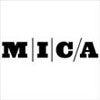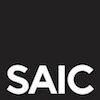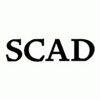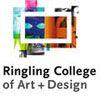Minor In Game Design Uic
Our 2020 rankings of the Top 50 Graphic Design School Programs in the US. We considered over 700 colleges with graphic design programs for this year's rankings. For an explanation of ranking criteria, click here.
1. Yale University, New Haven, Connecticut (Top 1% of schools considered)

Founded in 1701, Yale University serves more than 12,300 students enrolled in dozens of programs in the areas of art, architecture, divinity, drama, forestry and environmental studies, law, management, music, public health, and more. The school, which houses more than 145 departments and schools, is home to one of the most prestigious fine arts schools in the U.S.
Established in 1869, Yale School Art was the nation's first art school connected with an institution of higher learning. With an enrollment of more than 100 students, the school offers a BA in Art and MFA degrees in Graphic Design, Painting and Printmaking, Photography, and Sculpture. An interdisciplinary Film & Video program is also available.
The BA in Art offers the opportunity for intensive study leading to greater specialization in one or more of the visual disciplines such as Graphic Design, Painting/Printmaking, Photography, and Sculpture. Course highlights include Introduction to Graphic Design, History of Graphic Design, Graphic Design Methodologies, Advanced Graphic Design: Series and Systems, Advanced Graphic Design: History, Editing, and Interpretation, Typography: Expression, Structure, and Sequence, Printmaking, Visual Thinking, and Interactive Design and the Internet. Students in the program will complete a Senior Project Seminar that will allow them to showcase their designs.
The Yale Graphic Design MFA (Yale GDMFA) is a competitive, 60 credit hour program that accepts just 12 students each year and up to six students into the preliminary-year program. MFA applicants are expected to have "substantial and distinguished experience in visual studies and related professional experience," says the school. Students can expect support for their graphic design collections in several ways including, "studio work led by faculty meeting weekly, small five- or six-person thesis groups meeting biweekly, and individual sessions with writing and editing tutors."
Lectures, presentations, and workshops are also part of the program as well as access to "extraordinary" resources including Yale University courses, conferences, films, lectures, museums, and the "extensive" research and rare book collections of Sterling and Beinecke libraries. Students also have a designated workspace in the design studio loft and access to equipment including bookbinding materials, wide format printers, a RISO duplicator, Vandercook press, and workspaces in the School of Art buildings. More resources supporting interdisciplinary projects including motion capture and VR are available at the nearby Center for Collaborative Arts and Media.
The Yale Graphic Design MFA takes two years to complete, full-time.
2. Rhode Island School of Design, Providence, Rhode Island (Top 1% of schools considered)

Founded in 1877, Rhode Island School of Design (RISD) is one of the first art and design schools in the U.S. Serving approximately 2,500 students from across the U.S. and 57 other countries, the school has 19 studio majors and leading to bachelor's or master's degrees in the Fine Arts, Architecture, Design or Art Education. The school's most popular programs are Graphic Design, Film/Animation/Video (FAV), Illustration, Painting, and Industrial Design. Aspiring graphic designers have two options: the four-year undergraduate BFA and the graduate MFA with two tracks.
One of the largest departments at RISD, the school says Graphic Design offers "countless opportunities to collaborate within and beyond the discipline," thanks to access to more than 160 undergraduate majors. Course highlights include Spatial Dynamics, Color + Surface, and Design Studio. The program culminates in a "challenging, self-defined degree project that taps into each student's strengths, interests and experiences," says the school.
The MFA programs offer the same opportunities as the BFA does, as well as two tracks: a two-year option designed for students entering with undergraduate degrees in graphic design or other visual communication, and a three-year option designed for students with degrees in liberal arts, the sciences or fine arts. Built on a sequence of required courses, the curricula for both tracks allow candidates to tailor individual courses of study through cross-disciplinary electives.
An impressive 96% of all RISD graphic design graduates are employed one year after graduation, and 70% are employed in positions directly related to their major.
3. Pratt Institute, Brooklyn, New York (Top 1% of schools considered)

Founded in 1887, Pratt Institute serves more than 4,800 students enrolled in more than 25 undergraduate degree programs and concentrations and more than 26 graduate degree programs in its Schools of Art, Design, Architecture, Liberal Arts and Sciences, and Information. Founded in 2014, The School of Design offers "up to four of Pratt's oldest and most esteemed disciplines," says the school, including Communications Design, Fashion Design, Industrial Design, and Interior Design.
The Communications Design program is the "only program in the country that recognizes and embodies the convergence and integration of Illustration, Advertising, and Graphic Design as the primary forces for the visual expression of ideas." Students may concentrate in any of three areas (Illustration, Advertising Art Direction or Graphic Design). The undergraduate program for aspiring graphic designers leads to a BFA in Communications Design with a Graphic Design Emphasis.
The School of Design also houses the Graduate Communications Design Department, which offers an MFA in Communications Design and an MS in Package Design. The full-time Communications Design MFA emphasizes full-time studio practice in graphic design—communications, identities, objects, environments, and systems. Graduates are prepared to enter careers in print and digital media, typography, identity systems and branding, design strategy, social media and interaction design, motion design, environmental design, data visualization, information design, and user experience design.
First offered in 1966, the MS in Package Design is an initial master's degree that offers students structured courses on the decision-making process for new product and package development, featuring direction in package design, typography, brand development, marketing, structural packaging, packaging technology, fragrance packaging, and the business aspects of the package industry. This is a full-time program, which culminates in a capstone thesis project.
For students who are not yet ready to commit to a degree program, the School of Continuing and Professional Studies (SCPS) offers Certificate Programs in Digital Design including Graphic Design, Digital Design, Branding and Digital Marketing and many others. These programs may be taken individually or "stacked," producing an "accelerated path to completion," says the school. Like the undergraduate and graduate Communication Design programs, Certificate programs offer the opportunity to complete an internship.
Students in all programs will have the opportunity to enroll in one of more than 20 study abroad programs and international exchange programs in over a dozen locations such as Florence, Milan, Copenhagen, London, and Tokyo.
4. Maryland Institute College of Art, Baltimore, Maryland (Top 1% of schools considered)

Founded in 1826, Maryland Institute College of Art (MICA) is the oldest independent, continuously degree-granting college of art and design in the U.S. The College enrolls nearly 3,500 undergraduate, graduate and open studies students from 49 states and 52 countries. Around 80 programs leading to the BFA, MA, MFA, and MPS degrees are available in the areas of fine arts, design, electronic media, art education, liberal arts, and professional studies. Post-baccalaureate certificate programs are also offered.
Programs for aspiring graphic designers include a BFA in Graphic Design with three Concentrations including Graphic Design Studio, Book Arts Studio, and Graphic Design + Humanistic Studies, an MA in Graphic Design (GDMA) and an MFA in Graphic Design (GD MFA).
The undergraduate graphic design curriculum at MICA features a three-year sequence of core design courses, while the 60-credit MFA program features two years of full-time study that the school says combines "critical seminars, guided studio courses, and independent work." Students in the MFA program may choose a concentration in Critical Studies or Curatorial Practices or "take advantage of electives in many MICA departments, including video, printmaking, and digital media."
The MA program prepares students for advancing their careers and/or for applying to the competitive MFA. Program highlights include an "intensive introduction to design," provided by the GDMA Studio, "taught with a strong emphasis on design fundamentals, process, visual research, and working across media," a Design Theory and Practice Seminar, and the GDMA Workshop. Through the workshop, GDMA students will have the opportunity to create and exhibit a self-directed design project and a professional portfolio.
5. The New School's Parsons School of Design, New York, New York (Top 1% of schools considered)

The New School was founded in 1896 by American Impressionist William Merritt Chase. Back then, the school was known as The Chase School, and later as New York School of Fine and Applied Art. Today, known as The New School's Parsons School of Design, this art and design college serves nearly 6,000 students enrolled in 130 degree and diploma programs across five schools including the School of Art and Design History and Theory, School of Art, Media and Technology, School of Constructed Environments, School of Design Strategies, and the School of Fashion.
The School of Art, Media, and Technology offers several degree programs for aspiring graphic designers including an AAS in Graphic Design, a BFA in Communication Design, and an MPS in Communication Design.
The school says that the AAS program provides a "solid foundation in the traditional practices and concepts of graphic design," while the BFA covers typography and interaction. Sponsored projects are in the areas of publication, interaction design, branding, advertising, type design, information design, motion graphics, and environmental design.
The one-year, 30 credit hour MPS program offers a concentration in Digital Product Design. Per the school, the program "combines instruction in advanced interaction design with coursework that develops your user-experience, design-thinking, and collaboration abilities." Students will graduate with "industry-ready conceptual and front-end development skills and a network of design professionals to help" them "advance in or enter a rapidly growing field." Career opportunities include Interaction Design (IxD), User Experience (UX) Design, Digital Product Design, and Product Management, to name a few.
Parsons also offers a Graphic and Digital Design Certificate through its continuing education department. The program, which consists of six courses, can be completed online or through a combination of online and on-campus courses.
6. School of Visual Arts, New York, New York (Top 1% of schools considered)

Founded in 1947 as "Cartoonists and Illustrators School," School of Visual Arts (SVA) serves more than 3,700 students enrolled in over 30 programs in areas ranging from fine arts and graphic design to filmmaking and photography. The programs at SVA lead to the BFA, MFA, MA, MAT or MPS degree.
Offerings for aspiring graphic designers include a BFA in Design and a Design/Designer as Entrepreneur MFA. The BFA is a "multidisciplinary educational system in itself, offering separate majors that include Graphic Design, Motion Graphics and 3D Design," says the school. The program can be divided into package design, editorial design, information graphics, corporate identity, publication design, CD packaging, book jacket design, environmental design and website design. Other program highlights include intensive one-week workshops, exhibitions that are routinely covered by NBC, CBS. ABC, and CNN, competitions, enrollment in the AIGA (American Institute of Graphic Artists) and the Art Directors Club—two of the most prestigious design organizations in the country, industry review, and internships.
The Design/Designer as Entrepreneur MFA "inspires" students to conceive, produce, brand and market their own innovative content. Interaction, motion graphics, branding, and user experience are covered as well as typography as a visual language, video and new media directing, and art book and digital publishing. Students will also take classes in business, marketing, ethnography, strategy, research, advertising, promotion, intellectual property and networking.
MFA students have access to SVA MFA studios, open 24 hours a day and "designed to simulate an operational design/media firm with spacious workstations that allow for individual and collaborative work." In the studio, students will produce a prototype to pitch to investors, collaborators or distributors. This final product is presented in public at the school's Venture Forum at the SVA Theatre and subsequently to the design community.
Graduates of the program have gone on to work for commercial and not-for-profit corporations, institutions and businesses. Many founded their own start-ups, design firms and studios. Some have become partners in businesses and individual projects. Graduates have started over 50 design studios around the globe.
7. ArtCenter College of Design, Pasadena, California (Top 1% of schools considered)

Founded in 1930, ArtCenter College of Design serves approximately 2,250 students representing more than 40 countries. The school offers 11 undergraduate and seven graduate degree programs in a variety of Industrial Design, Visual, and Applied Arts Disciplines. A joint MS/MBA program with the Drucker-Ito School of Management is also available. The school, which has a campus in Berlin, two campuses in Pasadena, and satellite studios in Los Angeles at the Peterson Automotive Museum, offers a BFA in Graphic Design and an MFA Graduate Graphic Design (MGx).
Students might also consider interdisciplinary programs such as the Desginmatters Concentration, which leads to a Certificate in Art and Design for Social Impact or the Integrated Studies Program, which covers essential skills and competencies, critical thinking and the creative process, cultural literacy and contextual reference, interdisciplinary experience, and quality of execution and professional practices. Offered through the Graphic Design Department (GX), all programs offer internships and study abroad opportunities.
8. School of the Art Institute of Chicago, Chicago, Illinois (Top 2% of schools considered)

Founded in 1866, the School of the Art Institute of Chicago (SAIC) is one of the oldest accredited independent schools of art and design in the country. Serving nearly 3,700 students from 78 countries, SAIC offers more than 50 areas of study from Animation and Costume Design to Visual Communication Design and Writing. Programs for aspiring graphic designers are offered through the Visual Communication Design Department. Options include a BFA, MFA or Certificate in Graphic Design.
The BFA program has two major areas of focus including Physical Media (print, objects, and environments) and Virtual Media (interactive and time-based media). The MFA program offers the opportunity to explore other related departments at SAIC such as Printmedia, Writing, Photography, Architecture, Interior Architecture, and Designed Objects, and Film, Video, New Media, and Animation (FVNMA). The purpose of this opportunity is to "extend students' design work into new territories," says the school. The Graphic Design Certificate is designed for "students with an interest in exploring graphic design with an emphasis on print media."
Other Graphic Design Program highlights include an active AIGA (American Institute of Graphic Arts) student chapter, Exploratory Languages (a lecture series featuring leading designers and design educators from across the country), and CIPB (Chicago International Poster Biennial), which is an international competition representing leading designers from throughout the world. Internship and optional study abroad opportunities are also available.
9. Savannah College of Art and Design, Savannah, Georgia (Top 2% of schools considered)

Savannah College of Art and Design (SCAD) was founded in 1978. With campuses in Savannah, Atlanta, Hong Kong, and Lacoste, France, the school serves more than 14,000 students from all 50 states and more than 100 countries. Offering more art degree programs and specializations than any other art and design university, SCAD has plenty of opportunities to study at domestic and international locations. The school also offers more graphic design programs than just about any other school on our list. Options include BA, BFA, MA, and MFA degrees in Graphic Design and a Design Management MA. A Minor in Graphic Design is also available.
All programs highlight Product Packaging, Entrepreneurship, Mobile Technology, Interface Design and User Experience. Students have the opportunity to declare a double major in the areas of Advertising, Branded Entertainment, Illustration, Motion Media Design, Sequential Art and more. Students also have access to Minors such as Mobile and Interactive Design, and Advertising Copywriting. Students may complement their degree with a Certificate in Digital Publishing.
The BA degree is offered in Atlanta, Savannah and online and the BFA, MA, MFA, and Minor programs are offered in Atlanta, Hong Kong, Savannah, and online. The Certificate program is offered in Atlanta, Savannah, and online.
SCAD graduates are prepared to join elite agencies, multinational companies, or start their own businesses as they lead branding, visual marketing, interactive media, and immersive campaigns. Graduates work at top companies around the globe including Apple, IBM, Ralph Lauren, Under Armour, Verizon, and many others.
10. California College of the Arts, San Francisco and Oakland, California (Top 2% of schools considered)

Founded in 1907, California College of the Arts (CCA) serves around 1,900 students enrolled more than 30 degree programs. Undergraduate programs for aspiring graphic designers include BFA degrees in Graphic Design and Interaction Design and a BA in Visual Studies. Graduate options include an MFA in Design that focuses on Graphic Design, Industrial Design, and Interaction Design.
Highlights for all programs include the opportunity to immerse in the areas of Brand Identity, Print, Motion Graphics, and Screen-Based and Interactive Design, elective offerings that will "strengthen" students "design toolkit," and the opportunity to gain real-world experience through CCA's extensive internship program. Students have the opportunity to intern for design firms, publishing houses, and nonprofits as they work toward a polished thesis project.
"Situated within a top art college," says the school, "the Graphic Design program also benefits from an atmosphere of hands-on making and experimentation. Students are constantly giving and getting feedback and testing their ideas with faculty, visiting experts, and peers."
Graduates of the Graphic Design Programs at CCA have landed positions at innovative design firms, museums, publishing houses, technology companies, nonprofits, and more.
11. California Institute of the Arts, Valencia, California (Top 2% of schools considered)

Walt and Roy Disney formed California Institute of the Arts (CalArts) in 1961 through the merger of two existing Los Angeles schools for art and music. The school became the nation's first postsecondary institution to offer graduate and undergraduate degrees in both the visual and performing arts. Just shy of a decade later, the new college, CalArts, opened its doors to offer programs in art, design, film, music, theater and dance.
Today, the school serves around 1,500 students enrolled in more than 70 undergraduate, graduate, and doctoral programs across six schools including the School of Critical Studies, The Sharon Disney Lund School of Dance, the School of Art, the School of Film/Video, The Herb Alpert School of Music at CalArts, and the School of Theater. The School of Art houses the Graphic Design Program, which leads to a BFA or MFA. A Digital Arts Minor and an Interschool Degree option are also available.
The school says that the Minor is "designed to help undergraduate students grasp the knowledge to build, engineer and design innovative custom systems." The Interschool Degree Option is available to a small number of graduates and advanced third- and fourth-year undergraduates whose skills and artistic interests warrant pursuing a degree in more than one School.
The BFA program is a full-time, four-year program that prepares students for a career in print and publication design, web and interface design, motion graphics for broadcast and film, branding, identity and type design, and design history and education. Each year in the program "builds on the experience of the previous as a sequence of additional classes explore image-making, typography and design history. Baseline coursework is followed by more specialized classes in areas such as web design, motion graphics, and type design." In addition to core studio classes, all candidates in the Program are required to pass a Graduation Portfolio Review in order to complete the program and obtain the BFA degree.
The MFA program offers two- and three-year options. During the two-year program, students deepen and refine their work through a set of required and elective courses covering subjects such as type design, web design, typography, motion graphics, design theory and design history. Students will also work with visiting designers on short-term projects within the focused studio environment.
"The three-year Program is designed for students who do not have a Graphic Design undergraduate degree, but who typically demonstrate a talent and enthusiasm for design, and a level of expertise in their given field. The heart of the Program is the Visual Literacy course, a critique class comprised of a series of structured projects designed to teach design principles, process, methodology and skills." Students in both programs are required to pass a Thesis Review to obtain the MFA degree.
12. Carnegie Mellon University, Pittsburgh, Pennsylvania (Top 2% of schools considered)

Founded in 1900, Carnegie Mellon University (CMU) serves more than 14,500 students representing over 100 countries. The school offers more than 100 programs across seven colleges, including the College of Fine Art, home of the School of Design. Here, aspiring graphic designers can earn a Bachelor of Design (BDes), formerly BFA. The program has three tracks: Products, Communications, and Environments. Students may focus in one or all three areas or pursue a more interdisciplinary focus that combines two of the three.
Other undergraduate options include the Minor in Design Application and the Undergraduate Interdisciplinary Degree known as "BXA," which provides students with the ability to evenly balance their study of humanities or sciences with design. While BXA majors may take 26 design courses and 15 outside courses, most BXA students take 12 design courses, with the balance of their courses taken outside of the School of Design. The Minor is for students admitted to other programs on campus who are interested in gaining "fundamental design skills and/or exposure to design."
"CMU also offers a unique program called Integrative Design, Arts, and Technology (IDeATe), which allows student to concentrate their studies on cross-campus industry themes like game design, animation and special effects, innovation and entrepreneurship, intelligent environments, and learning media design."
Graduate options include a one-year Master of Arts (MA) in Design program, a one-year Master of Professional Studies (MPS) in Design for Interactions, a two-year Master of Design (MDes) in Design for Interactions program, and a PhD in Design Studies. Students in the graduate programs can expect to take courses such as Prototyping for Interaction Design, Studio: Visual Communication Fundamentals, Design Principles and Practices, and Seminar: Design Thinking. Students may complement their skills and knowledge with elective courses outside of design. Courses in policy, business, service or social innovation, interaction or communication design, or professional writing are recommended.
13. North Carolina State University at Raleigh, Raleigh, North Carolina (Top 2% of schools considered)

North Carolina State University (NC State) at Raleigh was established in 1887. The school serves 34,340 students enrolled in more than 300 degree programs across 12 colleges and 65 academic departments. The College of Design houses the Graphic Design program, which offers two degree paths—a Bachelor of Graphic Design and a Master of Graphic Design. The College has recently established a PhD in Design/Information Design Concentration as well.
The undergraduate and graduate degrees are NASAD (National Association of Schools of Art and Design) accredited and the PhD Concentration is set to receive NASAD approval after graduating its first class.
Students in the undergraduate program study comparative ideas about, and methods for, creating visual communication. Sequenced core studios, typography courses, and image-making courses "progressively introduce and develop skills, processes, and sensitivities across a range of media," says the school. Graduate students will "closely examine the cultural and technological situatedness of graphic design and its products, and seek understanding of the people who use and interact with the things that graphic designers make."
Students in all programs will explore and become proficient in a wide range of media — print, web, mobile, virtual reality, augmented reality, and embedded technology. Students will also practice visualization strategies such as mapping, diagramming, and storyboarding, they will develop strong formal and conceptualization skills through project-based assignments, and immerse in advanced studios that cover special topics such as data visualization, branding, and accessible design.
Another major highlight of the Graphic Design Program at NC State is the opportunity to gain valuable professional experience through paid internships within leading firms, and/or participate in sponsored studios as part of the graphic design curriculum. Students also have the opportunity to study abroad for a semester or summer at the NC State Prague Institute, or take advantage of other study abroad options.
14. University of California Los Angeles (UCLA), Los Angeles, California (Top 2% of schools considered)

Founded in 1919 as the Southern Branch of the University of California, University of California Los Angeles (UCLA) serves nearly 45,000 students from all 50 states and more than 100 foreign countries. The school offers 125+ undergraduate majors across numerous schools, 109 academic departments, and more than 40 graduate programs. The School of Arts and Architecture is home to the Department of Design Media Arts (DMA), which offers both BA and MA degrees in Design Media Arts. The DMA program "emphasizes innovative creation with digital and mass media within the context of a public research university," says the school. The curriculum highlights "a solid foundation in form, color, space, motion, typography, and interactivity, followed by a broad selection of area studies courses in video, visual communication, network media, game design, and narrative."
Course highlights include Design Culture, Interactivity, Word + Image, Tangible Media, Form, and Typography. In addition, to DMA classes, students complete a series of general education courses and are encouraged to take other electives from the university to broaden their experience. A senior project also allows students to focus on individual interests within the areas of Visual Communication and Image, Interactivity and Games, or Video and Animation.
"This uniquely challenging and diverse program invites students to balance aesthetic sensibility with logical reasoning, formal theories with practical application, and contemporary thought with historical perspective." With courses that are taught as studios of no more than 22 students, individual growth and a sense of community within the department is encouraged.
15. Otis College of Art and Design, Los Angeles, California (Top 3% of schools considered)

Otis College of Art and Design (OTIS) was established in 1918 by founder and publisher of the Los Angeles Times, General Harrison Gray Otis. The school serves approximately 1,100 full-time students enrolled in 11 BFA degree programs ranging from Graphic Design to Toy Design. The school also offers MFA degrees in Fine Arts, Graphic Design, Public Practice, and Writing, as well as a variety of minors and certificate programs.
The BFA in Graphic Design is offered through the Communication Arts Department as well as a Minor in Advertising Design and a Graphic Design Certificate. Formats covered in the BFA Graphic Design Program include branding and logo development, posters, books, package design, apps, websites, and interactive design. Students in the program "learn to articulate a critical and theoretical perspective and develop graphic design skills, such as type design and traditional letterpress," says the school. "Strong craft and presentation skills are emphasized throughout," with students achieving "the highest level of design excellence through critiques, reviews, and workshops."
Course highlights for the program include Drawing and Building Form, Connections through Color and Design, History of Graphic Design, Illustration, and Advertising Design, Publication, Advanced Image Making Projects, Systems and Identity Design, and Type and Alternative Media. A Senior Thesis/Research Paper, Senior Project/Seminar, and Capstone are also part of the program.
The MFA in Graphic Design is an accelerated yearlong, "LA-based student, faculty and research collective of designers investigating the issues of our day." During the program, students learn to work across media and platforms through a series of visiting workshops, courses in design theory and history, studio projects, and round table discussions. "The coursework engages research, discourse, critical thinking, and iterative process with the goal of discovering many possible design outcomes. In so doing, the program supports students in taking on the challenges and opportunities in contemporary graphic design practice."
Graduates of the Graphic Design programs at OTIS have landed positions at major companies such as Apple, Anthropologie, LACMA, Guess, Metro, Capitol Records, and others.
16. Ringling College of Art and Design, Sarasota, Florida (Top 3% of colleges considered)

Ringling College of Art and Design (RCAD) was established in 1931 by circus baron, art collector, and real estate developer John Ringling. A member of the only global association to serve art and design education research (Cumulus), RCAD opened with just 75 students and 111 course offerings. Today, the school serves more than 1,600 students enrolled in 13 BA and BFA degree programs and nine minors. Graphic Design, Computer Animation, Film, Game Art, Illustration, and Virtual Reality Development are just a few options.
RCAD programs offer a rigorous curriculum, which combines studio and liberal arts, with client projects, substantive internships, and national competitions. The school's BFA in Graphic Design prepares students to design "show-stopping solutions for print and interactive media," says RCAD. Launched in 1980, the program allows students to collaborate with other artists such as copywriters, printers, photographers, illustrators, and developers to "make their ideas a reality." Course highlights include Design & Typography, New Media Design, Contemporary Design Culture, Interactive Design, Drawing & 2D Design, Drawing & 3D Design, and Visual Persuasion. For Course GDES 491, students have three options: Design Center, an Internship, or Graphic Design Elective.
RCAD internships have led to many full-time employment opportunities. Graduates have been hired by companies such as Google, Facebook, Adult Swim, CBS Interactive, ESPN, Apple iTunes, Leo Burnett, Microsoft, Yahoo!, American Greetings, IGN Entertainment, Wieden + Kennedy, Walt Disney Company, Birchbox, Inc. and many others.
17. Virginia Commonwealth University, Richmond, Virginia (Top 3% of schools considered)

Virginia Commonwealth University (VCU) was established in 1838. The school serves more than 31,000 students enrolled in 225 academic programs across 13 schools and one college. An additional four programs are offered at VCU's Qatar campus. The School of the Arts (VCUarts), which serves more than 3,000 students, offers 25 degree programs. The Department of Graphic Design here has several programs for aspiring graphic designers. Options include BFA degrees in Graphic Design and Communication Arts, and an MFA with a Concentration in Design/Visual Communications.
Students in the NASAD-accredited MFA program "concentrate on the philosophical, communicative, and aesthetic relationships of visual problem solving and the interacting skills leading to the effective articulation of concepts," says the school. Graduates will have the skills and knowledge needed to pursue a career in Design Education and/or further their professional practices in conducting visual or theoretical research, and in investigating the intersections of function and expression in design problem solving.
The 122-credit BFA in Graphic Design is designed to "educate students to be capable of integrating form and information for the purposes of effective visual communication." Course highlights for the program include Design Technology, Design Methods and Processes, Imaging, Letterpress, Book Arts, Visual Narrative, Studio Management, and Interaction. Seminar courses are also part of the program.
The Communication Arts BFA is a flexible degree program that allows students to study Advanced Figure Drawing, Scientific Illustration, 3D Modeling, Sequential Imaging (such as comic books and storyboards), Concept Design and Entertainment Design (such as video games and visual effects). "The program is centered on a rigorous investigation of studio methods and practices which explore conceptual and theoretical concerns for understanding and creating image, media, content and context."
The focus during the junior and senior years is typography, visual studies design, figure drawing, introduction to 3D modeling, the history of visual communications, digital drawing, concept drawing, sequential imaging, advanced illustration, and advanced 3D modeling. The senior year culminates with the capstone portfolio course and a variety of electives are offered each semester to provide students the opportunity for specialized study.
Both BFA options prepare students to create effective visual communications for the advertising industry, marketing, business, retail, entertainment, public relations, publishing and more.
18. University of Illinois at Chicago, Chicago, Illinois (Top 3% of schools considered)

University of Illinois at Chicago (UIC) was formed in 1982 "by the consolidation of two U. of I. campuses: the Medical Center campus, which dates back to the 19th century and the comprehensive Chicago Circle campus which replaced, in 1965, the two-year undergraduate Navy Pier campus that opened in 1946 to educate returning veterans." Today, with more than 31,600 students enrolled in 250 degree programs and 53 certificate programs across 15 colleges, UIC is the largest university in the Chicago area.
The College of Architecture, Design, and the Arts (CADA) houses the School of Design, which offers a Bachelor of Design (BDes) and a Master of Design (MDes) in Graphic Design. The four-year BDes program highlights studio-based instruction, while the two-year MDes focuses on an independent master's research project. In the BDES program, "emphasis is placed on perfecting hand skills and in developing proficiency with digital technology," says the school. "Through exposure to design practice, design culture, and critical observation, students experience Chicago as a global design center."
The two-year MDes program focuses on an independent master's research project that offers students the opportunity to explore a topic of inquiry with the potential to inform and shape disciplinary knowledge. Course examples include Advanced Graphic Design, Research Seminar, Documentation Studio, and Research Studio. During the final year of the program, students will participate in the Book Design Masters Project Exhibition.
A third option is the MDes Prelim Program. Offered to applicants who do not hold a bachelor's degree in design, the Prelim Program is a customized yearlong program that prepares students for the two-year MDes.
19. Cooper Union, New York, New York (Top 3% of schools considered)

The Cooper Union for the Advancement of Science and Art (Cooper Union or CU) was founded in 1859 by inventor, industrialist and philanthropist Peter Cooper. The school offers programs in the areas of Art, Architecture and Engineering, and courses in the Humanities and Social Sciences. With nearly 900 students enrolled, the school's art students account for 32% of the student population.
The School of Art at Cooper Union offers a flexible BFA in Art with a Specialization in Graphic Design. Students in the program may take elective studio classes and seminars, offered on a rotating basis, they may choose to focus their work in one or more areas of specialization, and they may enroll in advanced studio classes with the same course number multiple times. The school says that students are also "encouraged to follow an integrated approach by selecting from various areas while observing a prerequisite system designed to allow in-depth study in specific disciplines." Other program highlights include internship and study abroad opportunities.
20. Portland State University, Portland, Oregon (Top 3% of schools considered)

Portland State University (PSU) opened its doors in the summer of 1946 to just 220 students. Today, the school spans 50 city blocks, and it houses nine colleges and schools, 226 degree programs, and more than 25,000 students. The College of the Arts is home to the schools of Architecture, Art + Design, Music, and Theater + Film.
With around 1,400 students enrolled, the School of Art + Design offers BA, BS, BFA degrees and Minors in areas from Art History to Graphic Design. The Graphic Design Program has two options: the BFA and an eight-course Minor that includes Digital Design, Digital Imaging and Illustration, and Communication Design Systems, to name a few.
The BFA provides "a comprehensive education in design principles, applications, theories, history, and practice," says the school. "The curriculum places particular emphasis on craft, concept, and research skills, as well as the development of effective design processes, the generation of meaningful narratives and story-telling techniques, and engagement with various community partners." Students in the program work with faculty primarily through studio courses that introduce an increasing complexity of design problems and methodologies, combined with opportunities for independent development and interaction with professionals.
The first two years of the program culminate with a required Sophomore Portfolio Review, occurring once each year at the end of the Spring term. Only after successfully passing the Review are graphic design majors allowed to continue progression through the program. First and second year course highlights include Type & Communication Design, Digital Image and Illustration, Interactive Media, Communication Design Systems, and Contemporary Design Projects. During the third and fourth years of the program students "choose courses of increasing specialization, have opportunities for engaging in professional internships, and work to develop a professional portfolio as the culmination of their design studies."
Summer Study Abroad experiences such as Printmaking and Mixed Media in Guanajuato, Mexico, Art History in Rome, and Berlin: The Fall and Rise of an Art City, are also part of the program.
21. Minneapolis College of Art and Design, Minneapolis, Minnesota (Top 3% of schools considered)

Minneapolis College of Art and Design (MCAD) was established in 1886. The school, which shares a block with the Minneapolis Institute of Art, serves more than 800 students from 45 states and 15 countries. Of these, 50% are enrolled in Design, 38% in Media Arts, 10% in Fine Arts, and the remaining 2% in MCAD's new Arts Entrepreneurship Department. More than 20 programs are available across several departments, including a BFA in Graphic Design, Post-Baccalaureate Certificates in Graphic Design and Interactive Design and Marketing, and an MFA in Visual Studies. A 30 credit hour MA in Graphic and Web Design (online) is also available.
Students in the 120 credit hour BFA program "will develop their own voice and produce original work, they will research, engage with, and create innovative concepts, content, and form, and learn to communicate ideas visually," says the school. Students will also "refine their technical and conceptual design skills in preparation for a professional career in graphic design."
The 60 credit hour MFA program allow students to pursue creative work in Graphic Design, Illustration, Interactive Media, Paper and Book Arts, Printmaking, and many others. Students will participate in opportunities "unique to MCAD's MFA program" at art galleries, art centers, and nonprofits, designed to position students for success post-graduation. Most credits in the program are earned through one-on-one work with a faculty mentor who is an expert in the students chosen field. Optional internships are part of the program as well as a capstone thesis exhibition and paper in the final year.
Designed for motivated working adults, the 30 credit MA in Graphic and Web Design takes place entirely online. Courses cover typography, research, design principles, programming, ideation, web design, workflow management, and more. Students can start in fall or spring, and take one or two classes per semester.
Students in all programs also have the option to study abroad in places such as Italy, Japan, Ireland, England or Germany, or elsewhere in the U.S.
22. Columbia College Chicago, Chicago, Illinois (Top 4% of colleges considered)

Established in 1890, Columbia College serves more than 7,300 students from nearly every state and more than 60 countries. The school has over 100 academic majors or programs across several schools and more than 20 departments. Schools include the School of Media Arts, the School of Fine and Performing Arts, and the School of Liberal Arts and Sciences. Programs for aspiring graphic designers are offered in the School of Fine and Performing Arts. Options include BA and BFA degrees in Graphic Design. A second BA in Graphic Design is also available for students who have already earned a bachelor's degree.
BA students take fewer credit hours in the major and are encouraged to choose a minor or double major in another program such as Fine Arts, Photography, Advertising, or Motion Graphics. BA students choose a concentration in one discipline such as Web Design, Publication Design, or a general concentration.
The BFA requires more advanced courses in graphic design than the BA. Students in this degree track do not choose a concentration and take courses across disciplines including Web Design, Publication Design, and Visual Identity. A second BA in Graphic Design is available if a student has already earned a bachelor's degree.
Students in both programs have the opportunity to intern at firms such as Leo Burnett—one of the largest advertising agencies in the world, and with clients like Procter & Gamble and Foote, Cone & Belding—a global advertising agency with clients around the world. Students have also interned at Pivot Design-an award-winning branding, marketing, and advertising agency, Pressley Johnson Design—one of the premiere design communications firms in the Midwest, and 50,000feet,Inc.—a firm that has worked with some of America's top brands.
23. University of North Texas, Denton, Texas (Top 4% of colleges considered)

University of North Texas (UNT) was founded in 1890 as Texas Normal College and Teachers' Training Institute. With around 39,200 students enrolled, UNT is the fourth-largest university in Texas. The school offers 105 bachelors, 88 masters and 37 doctoral degree programs across 12 colleges and one school. The College of Visual Arts and Design is home to the Design Department, which houses the Communication Design Program. Program options for aspiring graphic designers include BFA, MA, and MFA degrees in Communication Design.
The BFA program covers the basic principles of design, image making, color theory and typography. It is also designed to "help students learn to be effective conceptual thinkers and, most importantly, creative problem solvers in the disciplines of Advertising and of Graphic Design." The 36 credit hour MA in Communication Design and the 60 credit hour MFA in Communication Design are both taught as concentrations in Design Research.
Students in all Graphic Design programs have the opportunity to complete an internship, study abroad, and access "valuable resources" consisting of over 1,000 reference books, magazines and paper/print samples of photography, illustration, typography, graphic design and advertising.
24. University of Washington, Seattle, Washington (Top 4% of colleges considered)

Established in 1861, University of Washington (UW) serves more than 57,000 students across three campuses in Seattle, Bothell, and Tacoma. The school offers more than 570 degree options across 300+ programs and 16 colleges and schools. The College of Arts & Sciences is home to the School of Art + Art History + Design (SoA+AH+D), which offers a Bachelor of Design (BDes) in Visual Communication Design and a Master of Design (MDes).
One of the largest undergraduate programs at the University of Washington, Visual Communication Design emphasizes "visual problem solving, organizational skills, and information theory." Students in the programs engage in all phases of typography, information design, design systems, exhibition design, publication design, new media, and visual methods/processes. Sample courses for the BDes include Typography, Human Centered Design, Color + Composition, Interface Design, Motion Design, Visual Systems, Information Design, and Publication Design.
Sample MDes courses include advanced Design Foundations, Design Methods, Typography, Industrial Design, Interface Design, Case Studies in Corporate Identity, Exhibition and Installation Design, Interaction Design, Information Design, Design Graduate Studio, and Graduate Student Teaching Mentorship.
Students in both programs will have the opportunity to compete for more than 100 seats in the SoA+AH+D study abroad program to explore art, art history, and design in an international context. Past students have studied in Rome, Japan, Spain, and Tuscany.
25. University of Texas at Austin, Austin, Texas (Top 4% of colleges considered)

The University of Texas at Austin (UT Austin) was founded in 1881. The school opened its doors in 1883 with one building, eight professors, one proctor, and 221 students. Today, UT Austin is home to nearly 52,000 students enrolled in over 500 degree programs and fields of study across 18 colleges and schools. The College of Fine Arts, School of Design and Creative Technologies has several programs for aspiring graphic designers. Options include BA, BFA and MFA degrees in Design.
BA and BFA Design students develop their research, problem-solving and critical thinking/making skills through studio-based courses, while elective courses and the university's core curriculum emphasize the liberal arts. In their junior year, students must complete at least one professional internship, which may include working at major companies with offices in the Austin area. Just a few include Google, Dell, IBM, Apple, Samsung, Frog, Pentagram, and EA Games.
The BFA is a pre-professional degree program encompassing typography, image creation/manipulation, interaction design and 3-D design that is intended to prepare students for employment in the field of design. During the senior year, BFA Design students undertake a capstone design project and show their work in a public exhibition at the Visual Arts Center.
The Design BA is an "equally rich and rigorous exploration of design as a field," says the school, "but is intended for students who prefer the flexibility and breadth of a liberal arts degree to the more studio-intensive, pre-professional BFA degree." BA students enroll side-by-side with BFA students in rigorous introductory design studio courses. In the final two years of study, BA students take fewer upper-division studio courses.
The MFA in Design is a 60 credit hour program that accepts exceptional students with preexisting design skills. The program prepares students for "thought and organizational leadership in the field of design or in fields where design is being utilized strategically. In addition to advanced studio work in established design disciplines," students have the "opportunity to study, explore and work in disciplines that intersect with design."
All students in the program "will enjoy a formal curricular partnership with another discipline on campus and develop a thesis that thoughtfully intersects design with another field such as business, anthropology, engineering, or art." In addition, the MFA Design program offers preparation for college teaching in the field of design through a series of classes exploring design pedagogy.
26. Massachusetts College of Art and Design, Boston, Massachusetts (Top 4% of colleges considered)

Massachusetts College of Art and Design (MassArt) was founded in 1873 as a training institution for aspiring drawing teachers, architects, artists, and designers. Today, the school offers more than 20 undergraduate art programs, nearly a dozen graduate programs, and around seven certificate programs to a population of nearly 2,100 students. Options for aspiring graphic designers include a BFA in Communication Design and a Graphic Design Certificate (GDC).
Students in the Communication Design BFA Program "gain a robust working knowledge of print design, information design, branding, and dynamic media (user experience design)," says the school. Program highlights include hands-on studio classes led by practicing designers and design educators, and internship opportunities. "Throughout the program, students are challenged to develop design solutions in the areas of package design, publication design, web and app design, interactive communication, and advertising, as well as the creation of graphic identities and brand systems."
The 38 credit hour GDC is designed for working adults who are interested in advancing into a career in graphic design. Areas covered include branding, print and digital publication, interactive media, environmental graphics, and more. Graduates will leave the program with a portfolio of professional quality work.
Graduates of the Communications Design BFA and GDC work for ad agencies, in-house corporate design departments, design studios, and as freelance designers. Some graduates even go on to launch their own start-ups.
27. University of Illinois at Urbana – Champaign, Champaign, Urbana (Top 4% of colleges considered)

Established in 1867 as Illinois Industrial University, University of Illinois at Urbana – Champaign is one of the original 37 public land-grant institutions created after President Abraham Lincoln signed the Morrill Act. The school serves nearly 48,000 students through 15 colleges and instructional units. The College of Fine and Applied Arts, School of Art and Design offers a 122 credit hour Graphic Design program that leads to a BFA. A 64 credit hour MFA in Graphic Design is also available.
The Graphic Design BFA prepares students for entrance into the professional practice of design visual communications. The school says, "studio work addresses graphic design fundamentals (typography and image making), design history and contemporary practices, research methods, user experience, and social responsibility." In addition, "students have the opportunity to develop their personal interests by taking advantage of a highly interdisciplinary selection of elective courses offered by the School of Art + Design, including Photography, Video, Traditional Printmaking, Sustainability, Advanced Interaction Design, and the design of Ninth Letter, a nationally-distributed and award-winning literary arts journal."
The MFA prepares students to contribute to the field of design by entering into practice, academia or both. Specialized tracks of study for the program include Sustainable and Regenerative Design, Urban Sociology and Critical Race Design, Visual and Cultural Studies, and (student-proposed) Applied Research in Responsible, Innovation, Social Impact, and Engagement.
Students also have the opportunity to "explore responsible futures through research in traditional print media and emergent technologies including, but not limited to, data visualization, digital interaction, information design, systems thinking, and visual narrative." Other program highlights include the opportunity to take courses at Siebel Center for Design, collaboration with PhD students in Informatics, who specialize in design, and networking through "world-class" Programs across campus. Students will also develop partnerships at the Research Park—a leading technology hub that cultivates start-ups and accelerates corporate innovation at companies such as Abbott Laboratories, ADM, Ameren, Capital One, and State Farm.
28. The Ohio State University, Columbus, Ohio (Top 4% of colleges considered)

Established in 1870 as Ohio Agricultural and Mechanical College, The Ohio State University offers over 200 majors, minors and specializations from which more than 68,000 students can choose several paths to focus on graphic design in the College of Arts and Sciences' Department of Design. Options include a Bachelor of Science in Design (BSD) in Visual Communication Design and a Design Thinking Minor.
Students in the BSD program use digital tools, "including advanced computing technology, to visualize and present translations of complex data and ideas," says the school. Students will "study and explore research-based approaches to the visual design of information, the development of brand identities based on present and future conditions, and the creation of way-finding systems for navigating complex environments."
The production of printed materials such as books, brochures, packaging, and posters is also part of the program. Sample courses include Design Media 1 for Visual Communication Design, Typographic Design, Materials + Processes for Visual Communication Design, Design Research, Collaborative Design, Professional Practices, Sustainability and the Built Environment, and Design Matters. In their senior year, designers will complete a final project "that demonstrates each student's comprehensive knowledge and ability to work independently."
The Design Thinking Minor is a 15 credit hour program that introduces students to new and creative ways to solve problems. Courses include Design Practice, Design History, Exploring Design Thinking, Visualization as Thinking, and Presentation as Thinking.
Graphic design students who would like to pursue graduate study at OSU have two options: the MFA in Visual Arts offered through the Department of Art and the MFA in Digital Animation and Interactive Media offered through the Department of Design. The MFA in Visual arts offers emphases in seven studio areas: Art and Technology, Ceramics, Glass, Painting and Drawing, Photography, Printmaking, and Sculpture. The 66 credit hour, three-year program allows students to work across disciplines and with faculty from all seven studio areas.
The MFA in Digital Animation and Interactive Media allows students to select courses that cover visual design, technical skills for animation and interactive media, programming and algorithms, audio design, writing and scripting, and professional development. Students in all graduate art programs have 24/7 access to private and semi-private studio spaces as well as The Wexner Center for the Arts—a world-renowned contemporary art center located on campus; The Fine Arts and Cartoon Libraries; and the Urban Arts Space—an off-campus, OSU-run gallery in downtown Columbus. The Urban Arts Space is the location of the third-year thesis exhibitions.
29. University of Georgia, Athens, Georgia (Top 5% of colleges considered)

Established in 1785, University of Georgia (UGA) serves 38,920 students enrolled in more than 370 fields and areas leading to the bachelor's, master's, specialist education, professional, or PhD degree. Programs are offered in 17 schools and colleges, including the Lamar Dodd School of Art—home of the Art Program. Options for aspiring graphic designers include a BFA in Art with Concentrations in Graphic Design, Printmaking & Book Arts, and ArtX: Expanded Forms. An Interdisciplinary Art & Design A.B. (BA), a Minor in Studio Art, and MFA degrees in ArtX and Printmaking are also on the menu.
The school says, "all BFA degrees include the Studio Art Core, comprised of a year-long survey of art history, introductory-level studio foundations, secondary-level ideation and methodologies, and upper-level interdisciplinary thematic studio and professional practice courses." The Graphic Design pathway stresses "a strong grounding in design and communication fundamentals like typography, information hierarchy, concept development, and visual exploration."
Students in this program can expect to take courses such as Graphic Systems, Type & Image, Visual Narrative Systems, Advanced Typography, Thematic Inquiry in Contemporary Art and Environmental Graphic Design. Electives include Data Visualization, Advanced Illustration, and Topics in Digital Platforms & Dynamic Media, to name a few.
Students seeking the BFA degree will enter the School of Art as Intended Art majors. "In most studio programs, students are required to present an exhibition or final portfolio that serves as a capstone experience before graduation, demonstrating their achievement in developing a mature and cohesive body of work."
All art and design students have access to a large study abroad program that offers experiences on all seven continents and UGA campuses in Costa Rica, Central America, Cortona, Italy, and Oxford, England.
30. Arizona State University, Tempe, Arizona (Top 5% of colleges considered)

Founded in 1885, Arizona State University (ASU) serves more than 110,000 students across six campuses. The school offers more than 290 academic undergraduate programs and hundreds of graduate programs across 17 colleges and schools. The Tempe campus serves 51,585 students, making it the largest campus in the ASU system.
The ASU Herberger Institute for Design and the Arts houses the Design School, which offers programs in the areas of Architecture, Environmental Design, Industrial Design, Interior Design, Landscape Architecture, Urban Design and Visual Communication Design/VCD (Graphic Design). Visual Communication Design (VCD) options include a BSD in Graphic Design, an MSD with a Concentration in Visual Communication Design (VCD MSD), and a Master of Visual Communication Design (MVCD).
The BSD allows students to work on projects in the areas of Information Design, Interaction Design, Exhibition Design, Animation, Motion Graphics, Branding, Publication Design, Web Design, Interface Design and multiple contemporary facets of sensorial design. The MSD for individuals interested in "advanced studies in visual language, history, theory, criticism and methodology, design processes and technology." The degree "develops an understanding of contemporary graphic design issues through specialized research and design skills. It also prepares the graduate student for a career in graphic design education."
The MVCD has two options—a two-year studio-based program and a 3+ program. The two-year studio program is designed for students with a degree in VCD or Graphic Design and a 3+ program is designed to be a first professional degree for those students who do not have an undergraduate degree in VCD or Graphic Design.
31. University of Cincinnati, Cincinnati, Ohio (Top 5% of colleges considered)

Founded in 1819, the University of Cincinnati (UC) serves more than 46,300 students enrolled in 370 degree programs across 13 colleges and a graduate school. The College of Design, Architecture, Art and Planning (DAAP) houses the Myron E. Ullman Jr. School of Design, which offers a BS in Communication Design. The program, which takes five years to complete, offers three concentration areas including Graphic Design, Motion Design, and Interaction Design.
Students in the BS program will take a broad range of courses such as Foundational Drawing and Design, Kinetic Communication, Typography, Photodesign, and Design Ideation. Courses are supplemented with general education requirements, directed electives, design history, and interdisciplinary courses in design thinking and user-centered design. Studios "will refine and develop specific or general skills," says the school "and be enhanced with further study in design history, methodology, research methods, and global studies." Students in the program also reinforce their skills in the field through several co-ops.
Besides the BS in Communication Design, aspiring graphic designers might consider another program offered through UC's Blue Ash College. The Art and Visual Communication Department here offers a two-year Associate Degree in Applied Graphic Communication. The program is designed for "students seeking foundational skills appropriate for further study in the design field or for employment in areas of design support." Classes are small, so students receive considerable personal attention and direction from faculty. Though the program is a two-year degree, students may take up to three years to complete it.
Graduates of the Communication Design and Graphic Communication programs at UC have career opportunities in advertising, branding and corporate identity, digital product design, exhibit design, interface design, motion graphics and post-production design, package design, service design, user experience design, and web design. They may be found working in the "healthcare system or for governments and NGOs impacting society. Established designers may create their own firms or pursue entrepreneurial activities.
32. Texas State University, San Marcos, Texas (Top 5% of colleges considered)

Founded in 1899, Texas State University, San Marcos (TXST) serves more than 38,000 undergraduate and graduate students enrolled in more than 200 bachelor's, master's and doctoral degree programs — from biology to music to business to geography and more. With two campuses in San Marcos and Round Rock, Texas, TXST offers programs through 10 colleges, including the College of Fine Arts & Communication—home of the Communication Design Program, which offers both BFA and MFA pathways.
The school says that the Communication Design Program is "one of the largest public programs in the country." BFA students have three areas of professional study to choose from including Graphic Design, Art Direction, and Interactive Media. Courses in art direction, brand experience, corporate identity, design research, environmental graphics, human centered design, interactive design, sustainable packaging and typography prepare students for professional practice within a designer/client relationship. Students may further their education with independent study courses and professional internships.
Communication Design courses are taught in a studio environment, with class sizes limited to approximately 16. Students have access to the Mitte Complex, which has Macintosh labs, an open lab for student use, digital color printing availability including RISO, digital still and video camera checkout, and a photography studio and a multidisciplinary innovation lab equipped with laser cutter, CNC router, 3D printer and die cutter.
The MFA curriculum is "designed to provide advanced study in the areas of corporate advertising art direction, graphic design, and digital media design. The graduate program will provide students with the following: advanced problem-solving methodologies, updating technological advancement relating to communication design, examination of historical events within the discipline, and emerging theoretical constructs."
"Web-based delivery is heavily featured in course curriculum, as well as online video conferences, live chat, and blogging interfaces. In addition, the program offers courses via extended weekend seminars, evening courses, and independent directed study. This non-traditional structure allows active professionals to participate." The MFA program also offers "limited graduate assistant positions for qualified students who wish to immerse themselves full time in their graduate studies."
For students seeking a future career in higher education, the program provides the appropriate academic credential and the terminal degree in the discipline of visual communication design: the MFA.
"The exchange of ideas on an international basis is an important component of the MFA Communication Design program." Guest professors from around the world visit the TXST campus to" lecture and share their unique perspective on communication design with graduate students. In addition, selected students are encouraged to participate in international field trips to expand their knowledge in the field of communication design."
TXST Communication Design students have had their work published in CMYK, Step Inside Design, Graphis New Talent Annual, and PRINT. Students have also received recognition in national, regional, and local competitions such as The One Show, American Advertising Federation Awards, National DSVC Student Show, Creative Summit, Art Director's Club of Houston, Austin Addy Awards, and San Antonio Addy Awards.
33. Washington University in St. Louis, St. Louis, Missouri (Top 5% of colleges considered)

Founded in 1853, Washington University in St. Louis serves more than 14,500 students enrolled in more than 300 academic programs in a number of colleges and schools. The College of Art houses the Sam Fox School of Design & Visual Arts, which offers a BA in Design and BFA in Communication Design. The BA in Design is a 120 credit hour, collaborative program that allows students to experience design research and process through work in graphic design, interaction design, illustration, and fashion. Students can complete a broad design degree without a concentration, or choose a concentration in Communication or Fashion.
The BFA in Communication Design is a "collaborative program at the intersection of graphic design, illustration, and interaction design," says the school. Students in this program can choose to design interfaces for mobile devices and the web, they can make pictures for games and motion graphics, or illustrate stories and create comics and design printed posters and books. Students can also choose to apply design skills to social problems in the community, including areas such as public health and urban education, or they may study the history of printed images, comics, and advertising through the Douglas B. Dowd Modern Graphic History Library.
The first year requires studio coursework in drawing, 2D and 3D design, digital design, and a weekly lecture course. Second year students explore disciplines across art and design, selecting from introductory courses in graphic design, typography, illustration, printmaking, painting, photography, sculpture, and fashion design.
Course highlights include Word & Image, Interaction Foundations, Interaction Design: User-Centered Applications, Illustration Concepts & Media/Visual Journalism, Content to Cover: The Design of Books, Design for Social Impact, and Art Practice. The program culminates in a Senior Capstone, which may be an illustrated book, zine, screen-based presentation, graphic novel/mini-comic, or digital experience. The final project is displayed in a public exhibition and reviewed by external design professionals.
34. University of Southern California, Los Angeles, California (Top 5% of colleges considered)

Established in 1880, University of Southern California (USC) serves 47,500 students enrolled in more than 200 undergraduate programs, 300-plus graduate programs, and more than 150 minors. Program options for aspiring graphic designers are offered in the Roski School of Art and Design. First organized in 1883, the Roski School of Art and Design at USC is the oldest art school in Southern California.
"A supportive environment for experimentation in visual art of all media," says the school, Roski "encourages interdisciplinary, progressive approaches to studio art, design, curatorial practice and critical studies." The school offers a BFA and MFA degrees in Design and a Minor in Communication Design. The Design BFA requires 26 units of electives, which allows students to refine their focus. The program requires courses such as Art and Design Studio, Typography, Publication Design, Web Design, Drawing for Art and Design, Digital Tools in 3D Design, and 3D Design: Materials and Tools. A Professional Internship in the Arts, Special Projects in Design, and a Senior Thesis are also part of the program.
The Design MFA is a five-term program administered in collaboration with the Graduate School. A professional degree in the practice of design, the prorgam highlights mentored relationships with design faculty, participation in regular seminars, and discussions and studio visits with leading visiting designers, writers and theorists from around the world. The Roski School's partnership and affiliation with the contemporary design community in Los Angeles, such as American Institute of Graphic Arts (AIGA), is also critical component of the MFA Design Program.
Students will complete an MFA Design Thesis and the opportunity to gain experience as a teaching assistant is available on a competitive basis.
The Communication Design Minor requires courses in design, visual literacy and digital imaging. It also includes optional courses in business, communication, public relations and marketing, "allowing students to translate their design foundation in ways that are directly relevant to their career paths." The total number of units required for the minor is 24.
35. Rochester Institute of Technology, Rochester, New York (Top 5% of colleges considered)

Founded in 1829, Rochester Institute of Technology (RIT) serves nearly 19,000 across eleven colleges and schools emphasizing career education and experiential learning. The school, which has global locations in China, Croatia, Dubai, and Kosovo, offers several programs for aspiring graphic designers. Programs include a BFA in Graphic Design and an MFA in Visual Communication Design.
Offered through the College of Art and Design, School of Design, the BFA integrates major courses, studio and free electives, and liberal arts, as well as aspects of business, professional practices, computer-based skills, collaborative projects, and workflow. Students can expect to take courses such as 2D and 3D Design, Time-Based Design, Interactive Media Design, Web and User Interface Design, Branding and Identity Design, Design Systems and Methodology, and Experiential Graphic Design. All students in the BFA program will complete a portfolio and Senior Capstone Project.
The MFA in Visual Communication Design (VCD) is a 60 credit hour program composed of courses in Communication Design, Interactive Design, and Motion and 3D Digital Design. In addition, students are required to take Design History Seminar, Design Theory and Methods Seminar, and Professional Practices. The school says, "seminars explore cross-disciplinary principles, theories and methods that can be used by designers. Through selected readings from current periodicals, critical writing, hands-on involvement, presentations and guest lectures, students will broaden their awareness of topics such as systems thinking, human factors, semiotic theory, and visual rhetoric."
The MFA in VCD, which enrolls around 100 students, allows all eligible students to participate in an optional co-op program the summer between their first and second years. Some students may have the opportunity to participate during the fall and spring terms.
Graduates of the BFA and MFA programs at RIT will have career options such as Graphic Designer, Visual Designer, Art Director, Interactive Designer, UI/UX Designer, Digital Product Designer, Presentation Designer, Freelance Designer, Junior Designer, and many others.
36. Auburn University, Auburn, Alabama (Top 5% of colleges considered)

Established in 1856 as the East Alabama Male College, Auburn University serves a co-ed population of 30,460 students enrolled in more than 140 degree options across 13 colleges and schools. The College of Architecture, Design and Construction is home to in the School of Industrial + Graphic Design. Program offerings for aspiring graphic designers include a BFA in Graphic Design (BFA GDES).
The program emphasizes Fine Arts, Exhibitions, Identity Development, Logos, Visual/Digital Interface, Packaging, and Magazine Design. In addition, the school says, "students have excellent opportunities for internship and cooperative education experiences as a result of well established relationships with regional, national and international companies and firms." Career opportunities range from "the development of strategies to implement large-scale communications campaigns, to the design of effective communication products such as magazines, logo and identity development, interactive media, web design, packaging, exhibitions, illustration, and environmental graphics."
Auburn GDES is the only Graphic Design Program in Alabama to receive NASAD accreditation.
37. Kent State University, Kent, Ohio (Top 6% of colleges considered)

Kent State University (KSU or Kent State) was founded in 1910. The school serves, which consists of an eight-campus system, serves approximately 43,457 students enrolled in more than 300 degree programs across dozens of colleges and schools. The College of Communication and Information, School of Visual Communication Design, offers several programs for aspiring graphic designers including BFA, MA, and MFA degrees in Visual Communication Design and a Design Minor.
The BFA program consists of approximately two-thirds of the coursework in the "creation and study of the visual arts," says the school, with the remainder in general studies. Because of the greater emphasis on upper-level studio courses, the BFA allows majors the opportunity to build greater expertise in a given area of the field.
The MFA is one of only three programs in the state to offer the Master of Arts degree in Visual Communication Design and was the first to offer the terminal degree in the field, the Master of Fine Arts. The MA is a 32 credit hour program that prepares students to work in emerging markets such as social media, branding, digital media and user experience design. The MFA "serves students with a strong undergraduate and/or professional experience in design who wish to advance into leadership roles." Graduates "typically pursue careers in design education, but also stand out in the industry for their ability to solve problems from a research-based design perspective."
The Design Minor provides students with "grounding in the fundamental elements of graphic design, including design research and history, graphic software, industry standards and professional ethics." All School of Visual Communication Design students must complete 300 hours of internship before graduation. Most internships are paid, and students have the opportunity to work at major companies across Cleveland and in Chicago, San Francisco, and New York.
38. Brigham Young University, Provo, Utah (Top 6% of colleges considered)

Brigham Young University (BYU) was founded in 1875 by The Church of Jesus Christ of Latter-day Saints (LDS). Serving around 33,500 students from all 50 states and 105 countries, BYU offers more than 400 undergraduate majors and minors, master's programs and doctoral programs. The school houses dozens of colleges, schools, and departments that offer programs from Accounting to Visual Communications.
The College of Fine Arts and Communications serves nearly 5,700 students enrolled in programs in the Department of Art, the School of Communications, the Department of Dance, the Department of Design, the School of Music, and the Department of Theater and Media Arts. Students in the College "undertake research projects, pursue internships, and participate in study abroad programs across the globe," says the school. Communications is one of the College's top six majors by graduation.
Options for aspiring graphic designers include BA and BFA degrees in Graphic Design, a BFA in Art with a Focus in New Genres or Printmaking, and Minors in Design or Advertising Design. Other areas of study include Interaction Design, Motion Design, Visual Development, and Branding.
Because of the popularity of the Graphic Design Program, enrollment is limited to just 40 students. Course highlights for the program include Branding, Design Thinking, Motion, Media Design, Bookbinding, Interaction Design, Letterpress Studio, and Studio Practices for Designers. Students in the program will complete a BFA Capstone Project and a required Professional Internship.
Student interns have the opportunity to apply their design skills in a real working environment, they will learn how to meet the needs of the client while preserving the integrity of the design principles they have learned in class, and interact with team members from all areas of expertise on a real-world project.
39. Boston University, Boston, Massachusetts (Top 6% of colleges considered)

Founded in 1839, Boston University (BU) serves more than With over 35,000 students from more than 130 countries, enrolled in 17 schools and colleges, and more than 300 programs of study. With three campuses and over 10,000 faculty and staff, BU is Boston's largest employer. Programs for aspiring graphic designers are offered in the College of Fine Arts. Options include BFA, MFA, and Certificate Programs in Graphic Design.
The BFA program "provides a sequenced studio approach, preparing students to thrive in a dynamic, creative professional environment," says the school. The program begins with Foundations, which introduces "visual concepts in two and three dimensions, with an emphasis on drawing from observation." In the Sophomore year, students specialize in graphic design coursework, with yearlong graphic design and typography studios that emphasize form and communication. Third year students participate in graphic design and typography studios that "address authorship, audience, and medium." The program culminates in the thesis project and end of year exhibition, where students "articulate a personally driven design methodology through an installation of their work in the Boston University Art Galleries."
The MFA in Graphic Design "provides a sequenced studio approach to advanced design thinking and problem solving for visual communication, preparing students to thrive in a dynamic professional environment." Graphic Design Studios form the programs core and electives complement the studios, providing the opportunity to specialize in areas of interest. Elective courses currently include Information Design, Design for the Web, Interactive Design, Experience Design, Motion Graphics, Design Theory, History of Graphic Design, Editorial Design and Exhibition Design.
MFA students also benefit from lectures by nationally and internationally distinguished designers and direct contact with the industry. The program culminates in a master's thesis, which is presented in an exhibition format at the Boston University Art Galleries.
An ideal step towards an MFA in Graphic Design, the Graphic Design Graduate Certificate Program is a one-year, full-time rigorous and intensive study in graphic design. The program includes core studio and typography requirements and allows students to choose elective courses based on their specific interests and career goals. Students in this program will complete 30 credit hours of study.
40. Clemson University, Clemson, South Carolina (Top 6% of colleges considered)

Founded in 1889, Clemson University serves nearly 26,000 students enrolled in more than 280 undergraduate majors, minors, and graduate programs in seven colleges. The College of Business, Department of Graphic Communications offers a BS in Graphic Communications that the school says is "dedicated to hands-on learning experiences." Students in the program are "placed in positions in a variety of printing, packaging, publishing, imaging and related industries in management, marketing, sales, customer service, creative, technical and scientific positions." The school says that placement rates are "consistently high" with "competitive salaries."
In addition to engaging in hands-on learning experiences, Graphic Communications students will take courses such as Digital Imaging and eMedia, Packaging Science, Ink and Substrates, Package and Specialty Printing, Commercial Printing, Technical Writing, Current Developments and Trends in Graphic Communications, and Marketing. Graduates of the program are prepared to enter the schools MS in Graphic Communications or seek positions in printing management, production planning and supervision, commercial and technical sales, and many others.
The MS in Graphic Communications includes 33 credit hours of graduate courses for the non-thesis option or 30 hours with a thesis. Within the total requirements, at least 17 hours will be in GC technical/managerial courses; seven will be research related; six credits will be from outside the Graphic Communications Department; and at least one-half will be at or above the 8000 level.
Graduates of the program are placed in positions in a variety of printing, packaging, publishing, imaging and related industries in management, marketing, sales, customer service, creative, technical, scientific, and academic positions.
41. Appalachian State University, Boone, North Carolina (Top 6% of colleges considered)

Appalachian State University was founded in 1899. The school serves approximately 19,280 students enrolled in more than 220 academic programs through the College of Arts and Sciences, College of Fine and Applied Arts, Reich College of Education, Walker College of Business, Hayes School of Music, Beaver College of Health Sciences, and Cratis D. Williams School of Graduate Studies. App State also offers a Doctorate of Education.
The College of Fine and Applied Arts houses the Department of Art, which offers several programs for aspiring graphic designers. Options include a BFA in Graphic Design and BS degrees in Graphic Communications Management – Cross Media Production (GCM – CMP) or Print/Packaging Production (GCM – PPP).
The program consists of 66 semester hours in Art Studio and related areas and 12 semester hours in Art History/Criticism and allows students to take a mix of both prescribed and elected courses in art, concentrating on individual strengths and interests. Sample courses for the program include Typography, Digital Imaging, Calligraphy, Interaction Design, Idea Lab, Motion Graphics, Sign, Symbol, Image, Design Methods, and Graphic Design Professional Practice.
Graduates of the BFA program "will be prepared to successfully contend for the rigorous and highly competitive careers in graphic design as well as for admittance into graduate level programs," says the school.
The BS in GCM-CMP "focuses on applying graphic messaging across different channels/platforms such as web, email, print, cover wraps, etc. to communicate to various markets." Sample courses include Digital Media Composition, Cross Media Production, Packaging Production, Web Development for Graphic Communications, and 3D Imaging and Animation. An industry internship is also part of the program.
The BS in GCM – PPP "covers a wide variety of processes and methods of production." This includes flexography, digital printing systems, offset lithography, variable data printing and wide format printing "in addition to the design and production of packages that protect and promote products in channels of distribution." Students in this program can expect to take many of the same courses required in the GCM – CMP program, as well as courses such as Advanced Packaging Production and Sustainability for Graphic Communication. This program also requires completion of an industry internship.
42. Temple University, Philadelphia, Pennsylvania (Top 6% of colleges considered)

Founded as a night school by Russell Conwell in 1884, Temple University serves around 40,000 undergraduate, graduate and professional students enrolled in more than 500 academic programs across 17 schools and colleges. The largest university in Philadelphia, Temple has international campuses in Tokyo and Rome, and study abroad opportunities across six continents.
Tyler School of Art and Architecture at Temple University offers a BFA in Graphic & Interactive Design (GAID), a BFA in Graphic & Interactive Design with Entrepreneurial Studies, and an MFA in Graphic & Interactive Design. The BFA in GAID allows students to work closely with faculty who are practicing professionals with established international reputations in design for print and electronic media. Students will learn by working design projects for print and interactive media including logo and collateral design for corporate identities, packaging, promotional campaigns, books, periodicals, websites, web apps and animation. Advanced level courses are offered in a wide range of topics including corporate design, packaging, typography, publication design, promotion design, advertising, art direction, design authorship, illustration, digital narrative and interactive design.
The school says that the curriculum is enriched by visiting designers and illustrators and an exciting range of off-campus opportunities including an internship program for course credit, participation in national and international design competitions and exhibitions, community-oriented work for nonprofit organizations, tours of professional design studios, and portfolio reviews through professional design and advertising organizations. The program culminates in a final portfolio.
Graduates from the program land positions at design studios, in-house design departments and advertising and marketing agencies. Many alumni from the program go on to establish their own successful businesses as well.
The 126 credit hour BFA in GAID with Entrepreneurial Studies is offered in partnership with Fox School of Business at Temple and Tyler School of Art and Architecture. The program integrates the disciplines of art and entrepreneurship, preparing students with the requisite skills for entrepreneurship in their respective studio discipline and necessary preparation to pursue graduate studies in their studio discipline, in entrepreneurship, or in similar professions upon graduation.
Tyler's MFA program in GAID is an intensive two-year immersion in the practice of design. The goal of the program, says the school "is to create a new generation of design entrepreneurs by providing them with real-world experience and the opportunity to be their own client." Faculty identifies "specific MFA projects that have great entrepreneurial potential and guide students through the rigorous processes to make them real. Many of the MFA projects are now making their way into GAID's design incubator, The Hatchery, a new initiative to promote entrepreneurship and transform student projects into marketable products." Students work directly with the design incubator's Director on marketing plans for graduate projects created at Tyler.
Graduate faculty "work closely with the MFA students in a program fueled by collaborative exploration. While faculty members guide students in defining and focusing on their unique projects, all students are engaged in supporting the development of each other's work through regular group critiques and shared research."
43. University of Florida, Gainesville, Florida (Top 6% of colleges considered)

Founded in 1858 as Gainesville Academy, University of Florida (UF) serves more than 56,000 students enrolled in 30 certificate programs, 100 undergraduate majors and 200 graduate programs across more than a dozen colleges and schools. The College of the Arts houses the School of Art + Art History, which offers a BFA in Graphic Design, an MFA in Design and Visual Communications (MXD), and an Undergraduate Certificate in Graphic Design.
BFA students enjoy a "rich and intensive studio experience," says the school, that allows them to "take art and design to the maximum depth possible in preparation to be an artist or designer, or to continue further study in art and design via a graduate program, or to even begin a career path directly related to the arts." Students can choose from emphases in Ceramics, Art + Technology, Painting, Drawing, Printmaking, Sculpture, and Creative Photography.
The MFA has two- and three-year options that consist of 60 credits total (terminal degree). This includes 24 credits in graduate design courses (research seminars, studio and fieldwork practice), 15 credits of open elective, six credits of practicum, and 15 credits for the MFA project, which is self-directed and designed, allowing students to focus in any area of Design and Visual Communications.
When comparing the two- and three-year MFA options, the three-year option is for students funded with an assistantship or fellowship. Along with funding, the University of Florida provides tuition remission for nine credit hours per semester. The two-year option is for students who are self-funded or have other sources of funding and desire an accelerated path. Students should be mindful of the time commitment that four to five courses per semester and any part-time work will require.
44. University of Texas at Arlington, Arlington, Texas (Top 7% of schools considered)

University of Texas at Arlington (UTA) originated as Arlington College in 1895. The school began with roughly 75 students. Today, total global enrollment for UTA is nearly 60,000. The school offers more than 180 degree programs across nine colleges, including the College of Liberal Arts (CoLA), which houses the Department of Art and Art History. Here, students can earn a BA, BFA or MFA in Art that covers Visual Communication (Graphic Design, Web Design, App Design, Game Design and Illustration), Emerging Media, Intermedia, Film and Video, Printmaking, Drawing, and more. Course highlights include Sign and Symbol, Publication Design, Three-Dimensional Design, History of Graphic Design, Information Visualization, Digital Media, Advanced Typography, Web Typography, Sustainable Design, and Advanced Printmaking.
Students in Graphic Design will complete Graphics Portfolio Preparation, which concentrates on the creation, development, and evaluation of the graphic design portfolio. BFA students will complete the Senior Exhibition/Presentation course as well and internship opportunities are offered in all programs.
MFA students must take 60 semester credit hours over six semesters of the three-year program. The student will be required to spend a minimum of three semesters in the MFA program with one academic year in residency as a full-time student. Thirty-nine credit hours are reserved for the concentration, with the remainder dedicated to supporting studio courses, art history courses, and free electives.
Students are required to take courses such as Research in Visual Communication, Critical Perspective in the Visual Arts & Visual Communication, Research in Studio Intermedia, and Creative Strategies. Elective options run the gamut from Research in Printmaking to Research in Photography Digital Imaging. Independent Study is also part of the program as well as the Thesis Exhibition.
Graduates of the Art programs at UTA have career opportunities such as Graphic Designer, Illustrator, Photographer, Art Director, Exhibition Designer, Art Dealer, Printmaker, Animator, Web/App Designer, and many others.
45. Michigan State University, East Lansing, Michigan (Top 7% of schools considered)

Founded in 1855, Michigan State University (MSU) serves around 50,350 students from 142 countries, every state in the United States and every county in Michigan. MSU students have access to more than 200 programs across 17 degree-granting colleges. The College of Arts & Letters, Department of Art, Art History, and Design, offers an MFA that allows students to select a track such as Graphic Design, and a BFA in Graphic Design that offers the unique opportunity for students to gain real-world design experience by offering design services to the community.
The school says "MSU's Design Center in the Department of Art, Art History, and Design works with internal and external clients to effectively communicate the client's messages in a professional manner. From logos to packaging, and brochures to websites, Design Center has worked on a variety of projects, each specifically targeted to address the goal and personality of an individual client."
Undergraduate students who "exemplify creativity, dedication, and professionalism in the Graphic Design Program" are selected to join the Design Center creative team each year.
Other program highlights include the opportunity to select concentration courses structured to address several career options within the discipline, internship opportunities, AIGA membership, and the Annual Visiting Artist & Scholar Lecture Series. Recent lecturers include Massimo Vignelli, Martin Venezky, Ben Fry, Nancy Skolos & Tom Wedell, James Victore, Andrew Blauvelt, Jim Sherraden of Hatch Showprint, Stuart Bailey, Jan Wilker, Cheryl Towler Weese, Hans Allemann, and Karen Cheng.
Graduates of the Graphic Design Program at MSU hold positions as creative directors, art directors, graphic designers, freelancers, and video editors with design firms, advertising agencies, production companies, publishing companies, and in-house design offices. Career concentrations include identity system, environmental signage and exhibition, magazine and book, web site, software interfaces, film titles and broadcast television graphics, typeface, packaging, poster, corporate branding, and retail design, etc.
46. University of Arizona, Tucson, Arizona (Top 7% of schools considered)

Established in 1885, University of Arizona was the state's first university. The school serves nearly 46,000 students enrolled in hundreds of bachelors, masters, and doctoral degrees, and first professional and specialist programs, in dozens of colleges and schools. The College of Fine Arts houses the School of Art, which offers BFA and MFA degrees in Studio Art with an Illustration and Design (I+D) Emphasis. Separate tracks in Illustration and Design are offered to undergraduates.
The Illustration Track provides "rigorous education in constructive anatomy," says the school. Students will "learn to describe the human form realistically and expressively and find personal methodologies in traditional and digital media." Graduates will leave the program with a professional portfolio and "knowledge of the history of Illustration as well as, the guidelines for ethical professional business practices in the field."
The Design Track "provides a foundation in design principles and methodologies, creative problem solving and digital processes." As students advance in the program, they will gain "knowledge and skills in professional practice including identity systems, web design, typography, motion graphics, history, contemporary criticism, and theory." Graduates will leave the program with a professional portfolio and "a broad understanding of the business of design as well as its potential as a medium of critical inquiry and community involvement."
The MFA is a 60 unit terminal degree comprised of interdisciplinary, graphic design and illustration courses as well as seminars, and independent studies "developing a body of self-authored work that contributes to the broad and expanding field of illustration, design and art."
"Focused studio and course structures explore the theory, philosophy, and making of contemporary illustration, design and art. The program provides a range of opportunities for focus in visual narratives, community engagement, social practice, environmental projects, and technology, with a firm grounding in contemporary and historical contexts."
Students in all Art Programs have access to studio spaces, computer labs with Wacom Cintiq Touch screens and animation stations, a digital imaging lab with large format printing, mounting and other services, letterpress equipment, photopolymer platemaking equipment, metal and wood type collections, binding equipment, darkrooms, wood and metal shops, sculpture foundry, and ceramics labs. Students also benefit from external resources such as the Center for Creative Photography, the University Museum of Art, and the Poetry Center, as well a library that houses an extensive book art collection.
47. Indiana University-Purdue University Indianapolis, Indianapolis, Indiana (Top 7% of colleges considered)

Established in 1969, Indiana University-Purdue University Indianapolis (IUPUI) was created after Indiana University (est. 1891) and Purdue University (est. 1869) merged their numerous programs and schools. Today, across the system, the school serves more than 45,000 students from 50 states and 142 countries, enrolled in 350 undergraduate, graduate, and professional programs. Seventeen schools grant degrees in Engineering, Health Sciences, Liberal Arts, Life Sciences, and more.
The Herron School of Art + Design at Indiana University-Purdue University offers BFA and MFA degrees in Visual Communications Design (VCD). BFA program highlights include access to collaborative classrooms and eight VCD studios, the opportunity to enhance the degree with a Minor in Book Arts or Studio Art and Technology, and classes taught by faculty who are working professionals in the field. VCD students also have access to research and studio spaces including the Think It Make It Lab, woodshops, photo lighting studios, book arts studio, and the Herron Art Library.
The final semester of the BFA program culminates in a capstone project that students develop with a focus on either service experience or digital experience design. A shared senior exhibition is also part of the final semester.
The MFA in VCD "focuses on forms of inquiry and actions involved in designing," says the school. The program is "experiential, involving both group and individual projects." In seminars, methods, and action research studios, students will develop knowledge, skills, and practices that will be applied to the final thesis research project. Course highlights for the program include Methods for Design Research, Seminar: Leadership in Design Practice, Collaborative Action Research in Design, Thesis Writing, and Methods for Design Synthesis.
Herron VDC alumni have landed positions at "powerful" companies such as Google, Humana, Samsung Research America, and many others.
48. Louisiana State University, Baton Rouge, Louisiana (Top 7% of colleges considered)

Louisiana State University (LSU) was founded in 1853 under the name Louisiana State Seminary of Learning and Military Academy. The school serves approximately 31,761 students enrolled in more than 220 programs through over a dozen colleges and schools. The College of Art and Design houses the School of Art, which offers two programs for aspiring graphic designers: a BFA in Studio Art with a Concentration in Graphic Design and an MFA in Graphic Design.
The 120 credit hour BFA program helps students develop skills in typography, print and editorial design, information design, digital imaging and motion graphics, packaging, environmental design, identity design, and branding. Course highlights include Graphic Abstraction, Two-Dimensional Design, Three-Dimensional Design, Digital Art, Prepress Production Techniques, Interactive Multimedia Design, Digital Imaging Techniques, and Applied Typography.
Per the school, the 60 credit hour, three-year MFA program includes "research and discourse of both modernist and postmodernist methods, strategies, and analysis of the practice of design and their implementation to contemporary graphic design." Students in the program will take 27 graduate studio hours, 12 art history hours, 12 studio art/general elective hours, and a three-hour teaching seminar.
Courses are supplemented by workshops and lectures by national and international visiting artists, scholars, and design professionals. The final year of study is "dedicated principally to the master's thesis—submitted as a thesis report and exhibition, for which it is anticipated that students will make original and comprehensive student-directed research investigations in graphic communications." The thesis is worth six credit hours.
49. University of Kansas, Lawrence, Kansas (Top 7% of colleges considered)

The University of Kansas (KU) was named as the official university for the State of Kansas when Gov. Carney signed the act to begin the university on March 1, 1864. Today, KU is a major public and teaching institution that serves approximately 28,423 students across all campuses, and from 50 states and 105 countries. Campuses include Lawrence, Kansas City, Overland Park, Wichita, Leavenworth, and Salina. KU has 13 schools, including the only schools of pharmacy and medicine in the state, and offers more than 370 degree programs.
Part of the School of Architecture and Design, the Department of Design offers a BFA in Visual Communication Design (Graphic Design). The program "prepares students for current professional demands and provides students with the fundamental design thinking, making and process skills required to build a rewarding career and facilitate life-long learning," says the school. Course content "deals with a variety of visual communication design problems related to the community, society, industry, commerce, and advertising and attention is given to the development of a well-rounded, representative, and quality portfolio."
Course highlights include Designer as Author, Design for Change, Design Understanding, Elements of Type, Publication & Editorial, Typographic Systems, and Visual Communication. Other program highlights include internship and study abroad opportunities as well as the option to complete a Certificate in Book Arts. The Certificate requires 12 credit hours, and students learn production across the "whole book—papermaking, typography, printing, and binding, informed by the history of the book."
Career options for graduates of the KU Visual Communication Design Program include traditional print media, magazine and book design, corporate marketing communications, branding, packaging design, exhibition and environmental design, motion graphic design, website design, interface design, and more. Job titles include Graphic Designer, Animator, Art Director, Commercial/Industrial Designer, Multimedia Specialist, Advertising Art Director, Public Relations Manager, Exhibition Designer, Marketing Manager, and many others.
50. Kansas State University, Manhattan, Kansas (Top 7% of colleges considered)

Founded in 1863, Kansas State University (K-State) serves approximately 21,719 students enrolled in more than 250 undergraduate majors and options, 43 graduate certificates, 73 master's degree programs, 39 doctoral degree programs, and four educational doctoral programs. Programs are offered through 11 colleges and schools, including the College of Arts and Sciences, which consists of more than 20 departments, more than 7,000 students and more than 115 degree programs, study abroad experiences, and pre-professional options.
Housed within the College of Arts and Sciences is the Department of Art, which offers both BFA and MFA degrees with a Concentration (undergraduate) or Emphasis (graduate) in Graphic Design. The undergraduate program takes place in a laboratory-like studio setting where "where an active community, informal peer-interaction, and opportunities for collaborative output help inform students' preparation for professional practice," says the school. "Through a mixture of training and experience in visual communication design centered on typography, the program develops students' abilities to shape and solve problems, while expanding technical and visual skill sets across industry-relevant media, materials, and environments."
Students in the undergraduate program will also have access to internship and study abroad opportunities and all K-State Graphic Design students will benefit from the local AIGA student group, which arranges studio tours, travels to national conferences and events, and attracts influential contemporary designers for speaking engagements.
The K-State MFA in Graphic Design consists of three years of study. Program highlights include independent study with departmental faculty and a cross-disciplinary graduate committee, dedicated studio space in Willard Hall and access to the rest of the Art Department facilities, and a third-year capstone design project and exhibition. Qualified students may also be eligible for a Graduate Teaching Assistantship (GTA), which provide financial support as well as valuable experience for future employment.
Minor In Game Design Uic
Source: https://www.animationcareerreview.com/articles/top-50-graphic-design-schools-and-colleges-us-2020-rankings
Posted by: pagansatedilly.blogspot.com

0 Response to "Minor In Game Design Uic"
Post a Comment